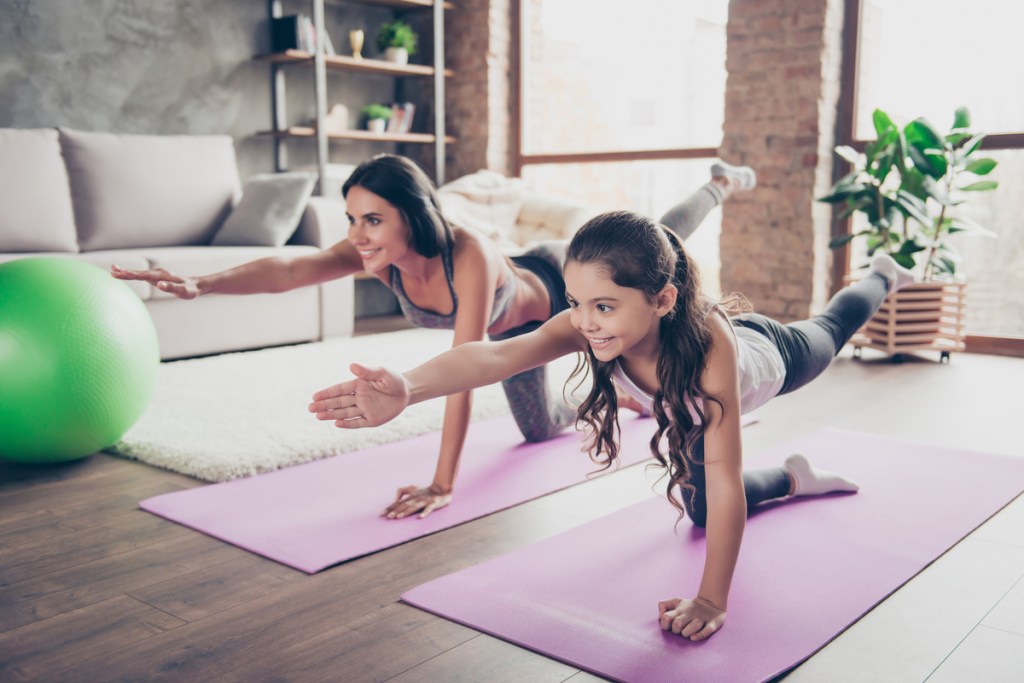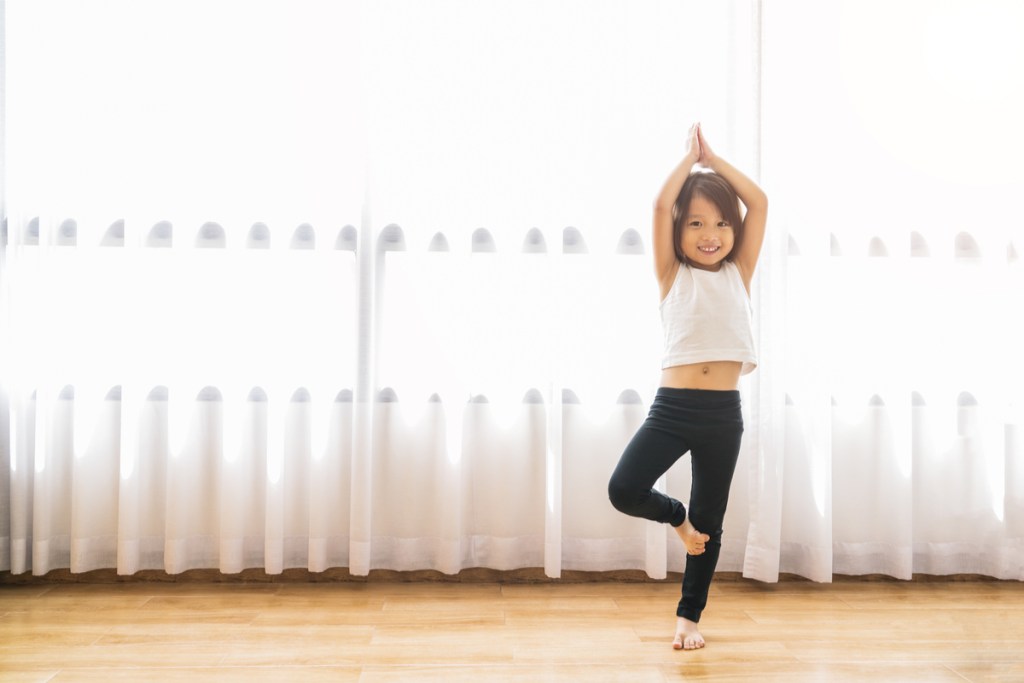Yoga has a lengthy history. Its origins are thought to have begun about 5,000 years ago in India, but some researchers think yoga goes back even farther. While researchers may not be able to agree on when exactly yoga became a thing, the pluses to adding the practice into daily life isn’t in dispute. Physicians have long touted the benefits of yoga in helping adults to manage stress, insomnia, arthritis relief, heart health and more. So if practicing yoga as an adult is great for overall health, what are the benefits of yoga for kids? It turns out that by doing yoga with kids, and introducing kids them to the practice is just as beneficial as adding it to your personal fitness routine.

Yoga with kids
Yoga has found its way into classrooms across the United States and the results have been favorable for kids and teachers. Studies have shown starting the school day with a good routine helps improve academic performance, reduce anxiety while helping with behavior problems. If doing yoga at school helps kids in the classroom, what can the ancient practice do for children at home?
Benefits of yoga for kids
Just like adults, regularly practicing yoga with kids goes a long way in improving their physical and emotional well-being. Of course, doing yoga is a form of exercise. Yoga strengthens and tones muscles while increasing flexibility. It also improves balance and endurance while working the heart. On the flip side, regular yoga practice has been shown to help kids manage stress and anxiety. Yoga also improves focus which has benefits in and out of the classroom.
Jessica Mei Gershen has been teaching yoga to kids at New York’s Brooklyn Yoga Project. A certified yoga instructor, Gershen has been practicing yoga since 2002. She started doing yoga because of back pain due to scoliosis. Through the Brooklyn Yoga Project, Gershen brings yoga into the lives of kids of all ages.
“Yoga is really effective because it’s so tangible,” Gershen said. “Learning physical postures builds confidence and strength as well as the mind-body connection. Through yoga, kids start to realize that they are strong and then are able to take that strength, confidence, acceptance, and compassion out into the world.”
Practicing yoga
Even though yoga has been around for centuries, the practice didn’t really take hold in the United States until the 70s. Today, the percentage of adults and kids who do yoga has increased. A 2012 survey out of the National Health Interview said 94 percent of yogis got involved with the discipline because of health reasons. Yogis reported in the survey that practicing yoga on a regular basis encouraged them to exercise more and eat healthier while improving sleep and reducing stress. So, why wait until there’s a health issue to bring yoga into your life?
Why kids need yoga as much as parents?
Over the years, multiple studies have shown that yoga is great for the mind and body. Many adults turn to yoga to help when a problem crops up like a bout with insomnia or battling a bad back. Life is stressful and incorporating regular exercise into the day is just as important for the kiddos as it is for parents and caregivers. Doing yoga as a family can be an ideal way to spend quality time together while benefiting the body and the mind. Yoga, unlike some forms of exercise, is accessible to all ages and learning the practice along with your children puts them and you on the road to a healthy lifestyle.

How to introduce yoga to kids
Like anything else with children, introducing kids to yoga is best with an element of fun. Gershen recommends keeping yoga practice with kiddos “playful”. Thankfully, there are a quite a few YouTube videos to help. Yoga with Adriene is a popular online yoga series. The yoga instructor has a Yoga for Kids video that parents and kids can do together to introduce them to the practice in a fun way. Cosmic Kids Yoga is used by some physical education teachers. Thanks to YouTube, parents can take advantage of this upbeat yoga series for kids at home too. The short videos introduce everyone to different yoga poses in a fun way.
Materials
Starting a yoga routine at home is pretty simple. All you need is comfy clothes, bare feet, and space on the floor. Parents and kiddos can certainly do yoga without a mat, but utilizing a yoga mat does help prevent hands and feet from slipping.
Life is busy and stressful. School, work, homework, sports, and other after school activities can make things a little crazy for the whole family not to mention the other things happening in every day life that causes anxiety. Bringing yoga into the house is a win-win for the adults and the kiddos in the family. Yoga is an age-old practice offering physical, mental, and emotional benefits for yogis of all ages. Regular yoga practice improves overall health and focus while reducing stress. Kids who do yoga regularly do better in the classroom. With online videos, introducing the family to yoga is low stress too. On the next family fun night, roll out the yoga mats, take off the socks, and namaste. Yoga sessions don’t have to be long either to reap the benefits. Ten to 15 minutes of basic yoga poses each day goes a long way toward enhancing the overall well-being of kids and adults.



